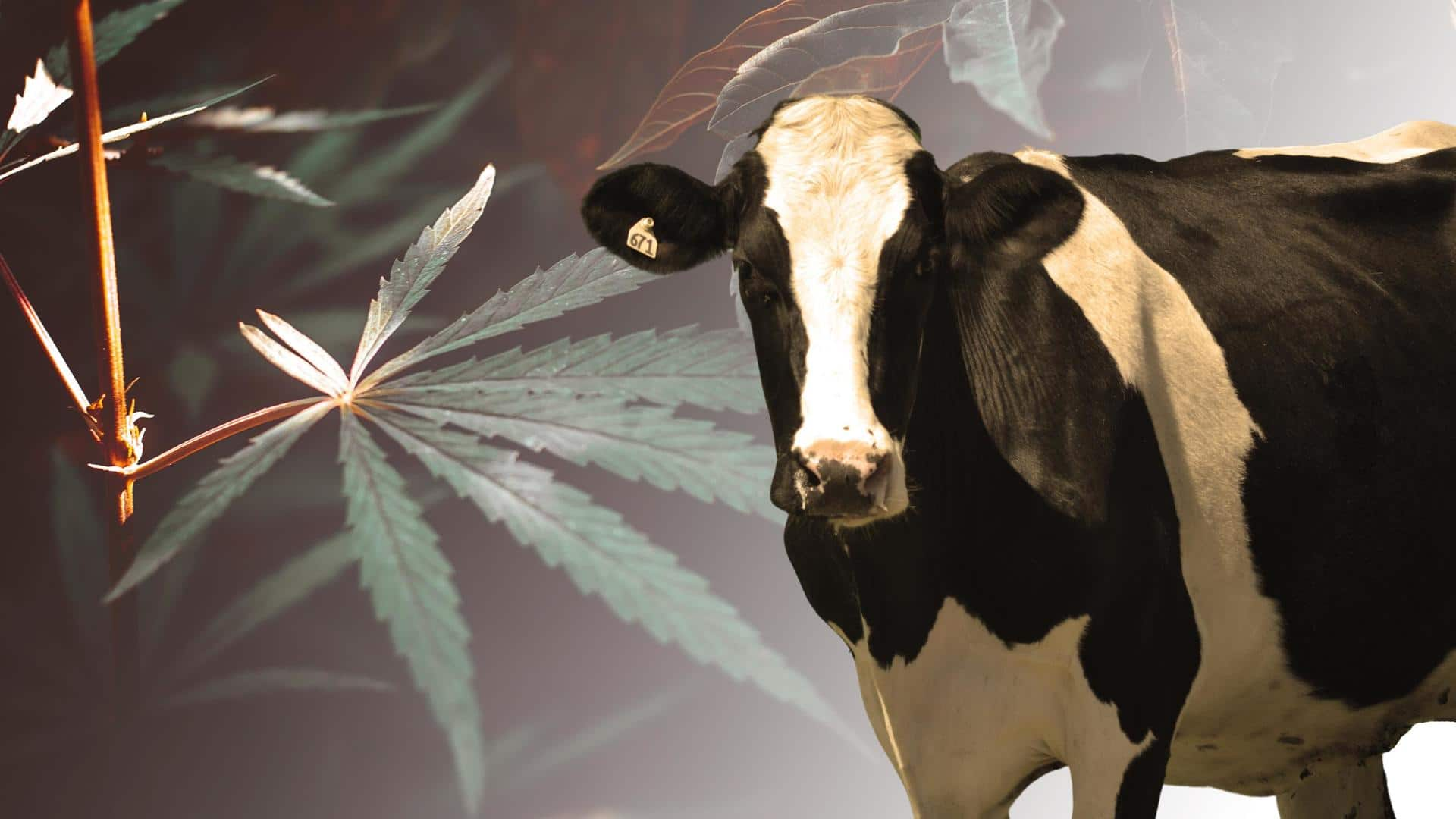
Cows fed with hemp got high; produced milk with THC
What's the story
A new study published in the journal Nature Food has revealed that cows produced milk with THC (Tetrahydrocannabinol), the main psychoactive compound found in cannabis, when fed with industrial hemp.
German researchers carried out this investigation for 28 days on 10 dairy cows.
The cows which ate hemp showed different behavior. But we do not know if milk containing THC can get humans high.
Context
Why does this story matter?
Recent changes to cannabis regulations have fueled the growth of the industrial hemp sector.
This has raised safety concerns since hemp contains cannabinoids, naturally occurring compounds that can interact with the human and animal endocannabinoid system, which modulates and regulates key bodily functions.
Importantly, the milk produced by hemp-fed cows exceeded acute reference dose of THC permitted for humans in Germany.
Study
The experiment was carried out on lactating cows
The experiment was conducted with lactating Holstein Friesian dairy cows.
The animals were divided into two groups. One received Ivory hemp silage, which contains low levels of THC. The second group received the high-THC Finola variety of hemp.
In accordance with the European Union laws, it was ensured that both hemp varieties did not exceed THC concentration over 0.2%.
Procedure
Study aimed at assessing effects of hemp on animal health
The study focused on understanding the effects of feeding industrial hemp to lactating dairy cows.
The prime objective was to quantify the transfer of cannabinoids into milk and to assess the effects on animal health and risks posed to consumers.
The team collected and analyzed milk, blood, and fecal samples from the experimental animals. They also measured physiological parameters and monitored the animals' behavior.
Impact
Cows fed with hemp played more with their tongues
Hemp feeding led to a decrease in feed intake and milk yield in cows. There was a negative impact on their heart rate, respiratory rate, and behavior as well.
The behavioral changes include increased yawning, salivation, nasal secretion along with red eyes, pronounced tongue play, and sleepy behavior.
Some cows "displayed careful, occasionally unsteady gait, unusually long standing and abnormal posture."
Results
Cannabinoids were persistent in cow's milk
The study reported that the cows ingested 86 times the amount of THC that is required to produce the high effect in humans.
All the observed changes in the behavior of cows stopped within two days of discontinuing the hemp feeding.
Researchers found that the cannabinoids were still persistent in the cows' milk. Infact, high concentrations of THC, CBD, and other cannabinoids were found.
Conclusion
It cannot be decided which cannabinoid exhibited the effect
"Although it is clear that the observed effects of industrial hemp silage feeding on animal health were mainly caused by the cannabinoids, it cannot be clearly defined which cannabinoid was responsible," states the study.
"Due to its high concentration in the cannabinoid-rich silage, THC is the most likely cause, but combination effects may also play a role."
Information
For the uninitiated, hemp is not the same as marijuana
According to the Centers for Disease Control and Prevention, hemp is defined as any part of the Cannabis sativa plant with no more than 0.3% of THC.
Since hemp has a lesser concentration of this psychoactive compound, it does not have the same effect as marijuana, although they belong to the same species.
Hemp also consists of CBD (cannabidiol) and other cannabinoids.